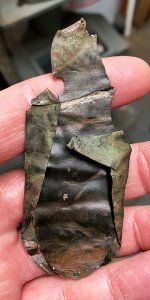I finally got around to cleaning the finds from my last 3hr hunt in mid-January, after that everything froze up and the snows came. This is a site I found through research and finally received permission to detect it back in December. Based on the finds after one hunt, I feel this was a barn as opposed to a homesite. Of course I’m going to return in the spring, hopefully after the corn has been disked and before the beans have been planted. Nothing else too exciting to report, except for a reins guide (I think), an umbrella tip, a Conestoga Bell and a flat button. I did get a surprise when I saw the design on an unidentified piece flat brass. It had another piece of brass inside of it which is un-decorated. My buddy pepperj feels that it’s what remains of a powder flask.

Conestoga Horses and the Bells
The Conestoga wagons were pulled by a special breed of draft horses called Conestogas. These large horses measured sixteen to seventeen hands at the withers, each horse weighs 1,800 pounds or more. Since the wagons often traveled over muddy roads, this special breed had no long hair beneath the fetlocks, the lowest joints on a horse's legs, and no long tails that could become matted. They were treated well by their owners since up to $1200 was spent to purchase a team. It took six horses to pull a Conestoga wagon. Each horse wore a set of bells hanging from an arch that was attached to its collar. At first horses in the front had five bells, the middle horses wore four, and those next to the wagon wore three bells. These bells announced that the team was coming, and that people and cattle should get out of the way. What the horn is to the car today, the bells were to the wagon. It was an unwritten law of the road that if a wagon came along the road and helped a disabled team so that it could resume the journey, the wagoner of the disabled team had to give up his bells to the team helping him. If a team arrived at its destination with its bells on, it was assumed that everything had gone well with the team on the trip. Today we have an expression that evolved from this custom – "I'll be there with bells on." No one really knows how the bells came to be used. It is known that pack horses wore them around their neck so they wouldn't get lost. The frontier farmer had cow bells, horse harness bells, sheep bells, and even turkey bells.
Thanks very much for looking!
Dave
Amazon Forum Fav 👍
Attachments
-
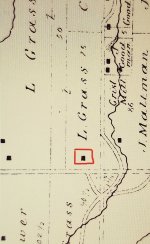 Pics019.jpg229.1 KB · Views: 85
Pics019.jpg229.1 KB · Views: 85 -
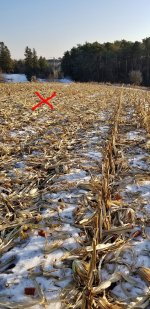 20191222_151055.jpg418.3 KB · Views: 58
20191222_151055.jpg418.3 KB · Views: 58 -
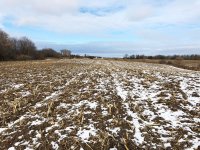 Pics012.jpg586.5 KB · Views: 64
Pics012.jpg586.5 KB · Views: 64 -
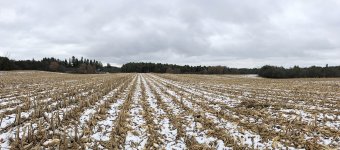 Pics010.jpg315.1 KB · Views: 73
Pics010.jpg315.1 KB · Views: 73 -
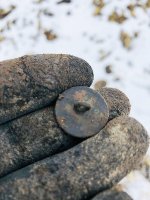 Pics013.jpg340.3 KB · Views: 70
Pics013.jpg340.3 KB · Views: 70 -
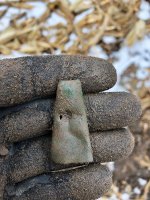 Pics015.jpg836.5 KB · Views: 78
Pics015.jpg836.5 KB · Views: 78 -
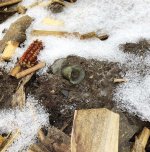 Pics020.jpg553.2 KB · Views: 60
Pics020.jpg553.2 KB · Views: 60 -
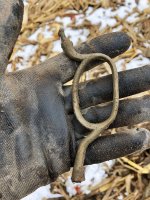 Pics018.jpg519.9 KB · Views: 71
Pics018.jpg519.9 KB · Views: 71 -
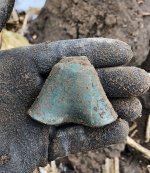 Pics017.jpg531.1 KB · Views: 73
Pics017.jpg531.1 KB · Views: 73 -
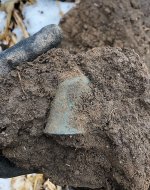 Pics016.jpg670.9 KB · Views: 70
Pics016.jpg670.9 KB · Views: 70 -
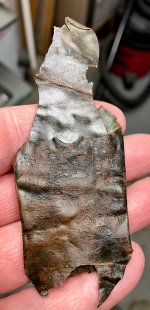 Pics002.jpg283.5 KB · Views: 64
Pics002.jpg283.5 KB · Views: 64 -
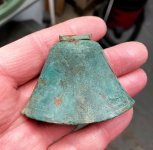 Pics005.jpg330.4 KB · Views: 64
Pics005.jpg330.4 KB · Views: 64 -
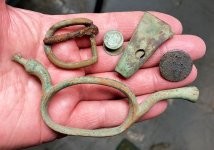 Pics009.jpg291.5 KB · Views: 103
Pics009.jpg291.5 KB · Views: 103 -
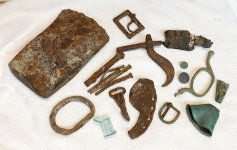 Pics006.jpg379.5 KB · Views: 64
Pics006.jpg379.5 KB · Views: 64 -
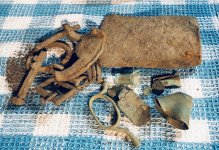 Pics014.jpg580 KB · Views: 69
Pics014.jpg580 KB · Views: 69 -
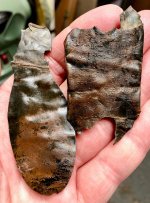 Pics003.jpg435.4 KB · Views: 64
Pics003.jpg435.4 KB · Views: 64 -
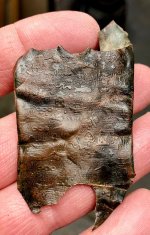 Pics004.jpg435.1 KB · Views: 60
Pics004.jpg435.1 KB · Views: 60 -
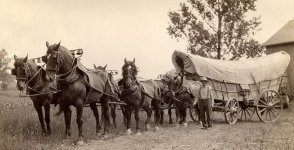 1-2-119-25-ExplorePAHistory-a0a5x3-a_349.jpg135.7 KB · Views: 65
1-2-119-25-ExplorePAHistory-a0a5x3-a_349.jpg135.7 KB · Views: 65
Upvote
20





 .. Love that bell, and the decorated piece of brass is beautiful. Do you think the two pieces went together originally?
.. Love that bell, and the decorated piece of brass is beautiful. Do you think the two pieces went together originally?